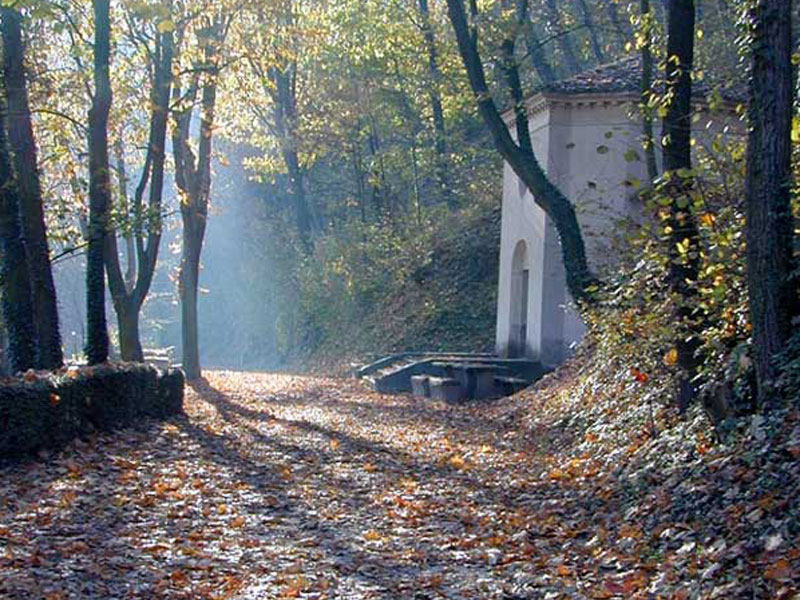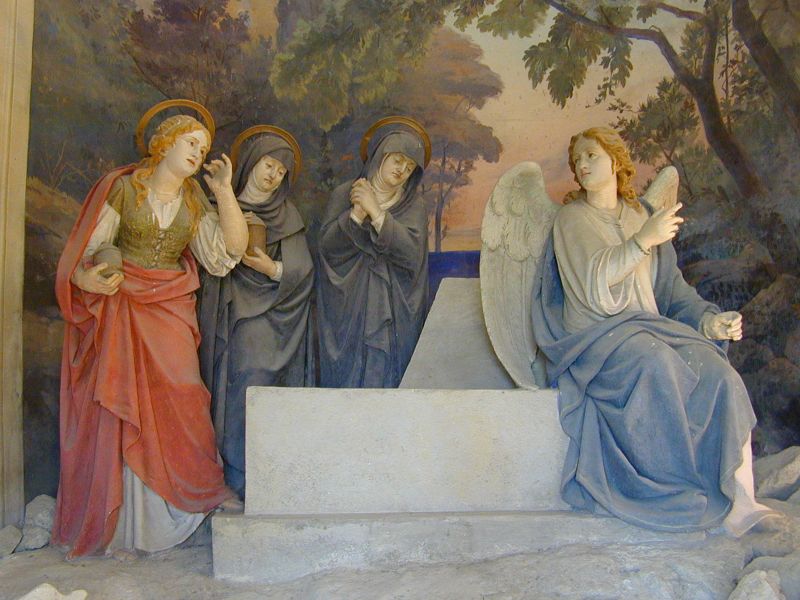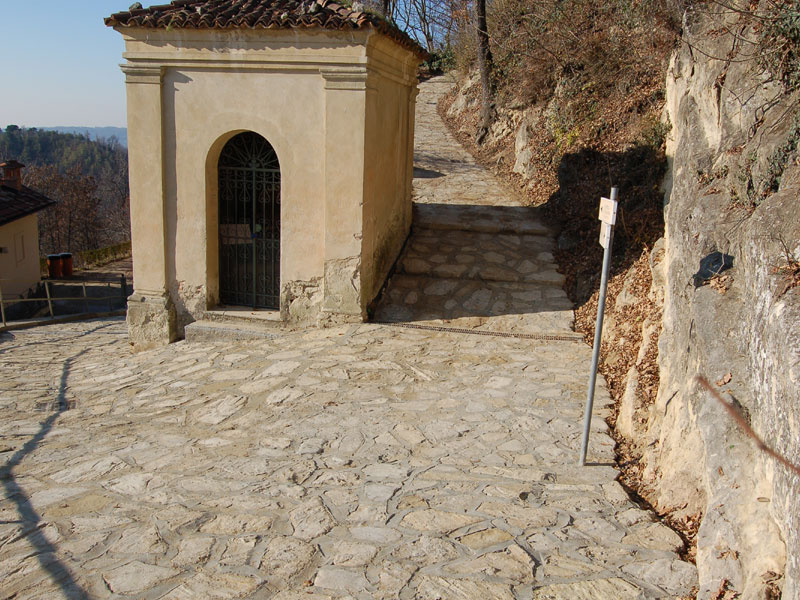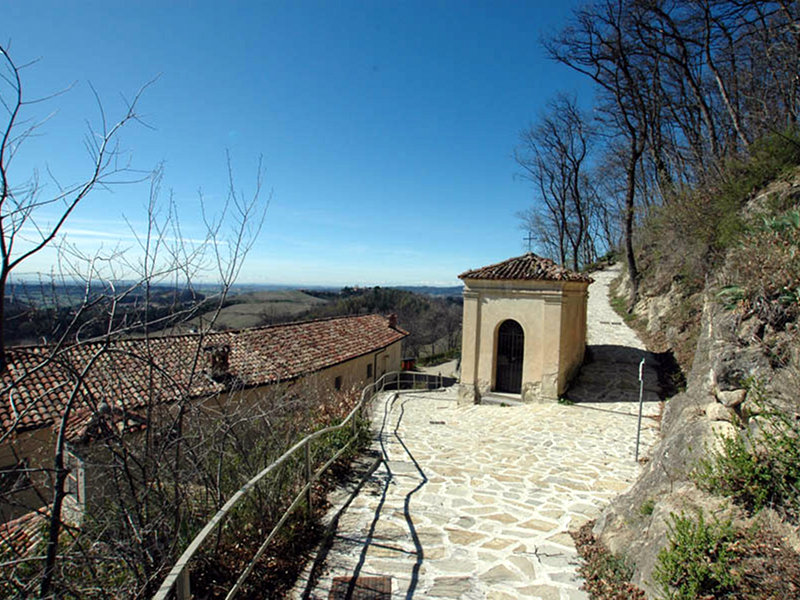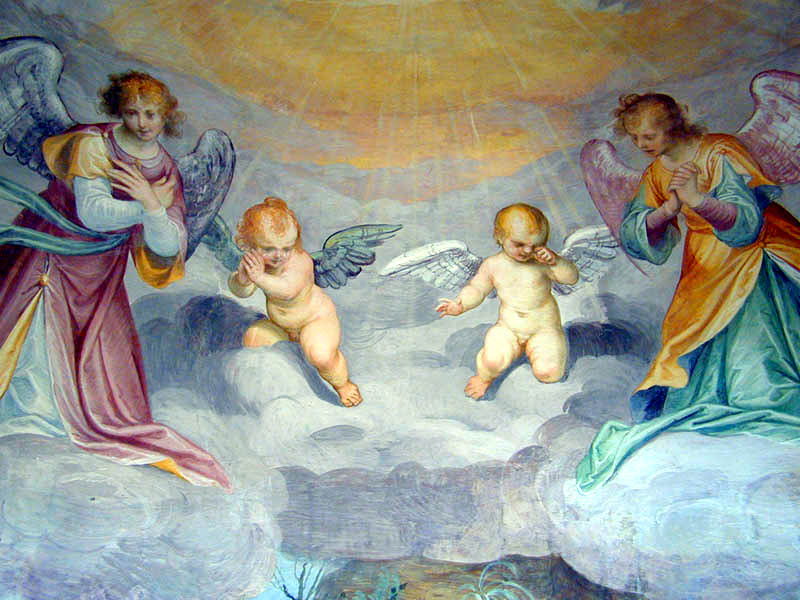Points of Interest
Sacro Monte
Sacro Monte was planned by Costantino Massino in 1589. The original project consisted of 15 chapels, the Rosary Misteries. During the centuries works took place. Now the complex consists of 23 chapels and 5 hermitages.
Between the end of 16th and the beginning of 17th centuries many sculptors and artists shaped the statuary groups (in polychrome terracotta) and the pictures which visitors can see in the chapels. Among these artists: Guglielmo Caccia (the Moncalvo) Giovanni and Nicola Wespin (the Tabachetti), G. B. della Rovere (the Fiamminghino) Giorgio Alberini, Veglia d'Asti and the Prestinari. During the Napoleonic period the complex was abandoned; afterwards, in 19th century, it was restored and the chapels were built again. Bistolfi, Brilla, Maggi, Latini, Morgari, Capra and Caironi took part in the works (Works lasted till the beginning of 20th century).
The Sacro Monte stands in front of the Sanctuary. It is surrounded from a shady boulevard which starts and ends in the square. It goes then through the wood on an easy path (the handicapped can go along it since architectural features have been knocked down). By following the system of signs in the park it is possible to reach Cappella del Paradiso.
The Sanctuary
The Romanesque Sanctuary was ruled by Canonici di Vezzolano till 1468, then by Lateranensi till 1798, by the Serviti till 1801, lastly by Minori Francescani from 1820 till 1992. Now it is ruled directly by Curia of Casale, which owns the Sacro Monte. The church is dedicated to Maria Assunta. It was enlarged in 1483 by Marquis of Monferrato Guglielmo Paleologo and in 1608 - 1612 by Lateranensi. The façade was restored in 1735, between 1890 and 1913 and in 1953. The mosaic dates back to 1953 (Dalle Ceste). The church consists of a nave and two side aisles. It houses important works such as La Madonna con Bambino e Santi, the autographic painting by Macrino d'Alba (1503); the cycle of frescoes representing the Storie di Santa Margherita d'Antiochia (16th century); the effige della Vergine, a wooden statue of 15th century; a wide collection of ex voto; the Via Crucis and the ambos by L. Bagna.
In the Park Offices there are a multipurpose room, a library and green areas for didactic exercises in the open air.
Hermitages
Once you reach the summit of the mountain, a "Return Route" leads back to the Sanctuary, so that the pilgrims can go back along a different route - currently not accessible - also representing a spiritual itinerary. The "Return Route" has been studied in order to represent a further moment of reflection through the images of the saints.
Differently from the route studied for the chapels, for the "romitori" (that is, the hermitages, solitary places ideal for meditation) there was not a project specifying the number, position, and sequence of the themes to represent. The choice seems to depend on the economic possibilities of the proponent and his particular devotion.
Today, five hermitages remain, some of them renovated in the 19th century: Sepolcreto dei Frati (former Sant'Alessio), Addolorata, San Rocco, San Francesco, San Luca.




